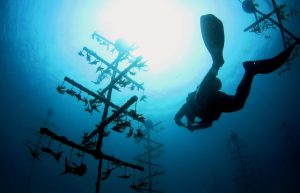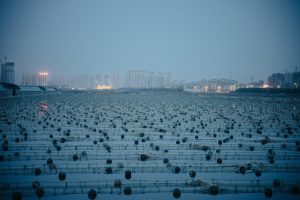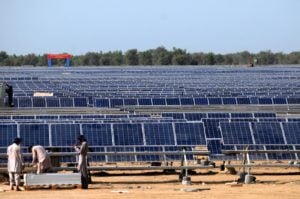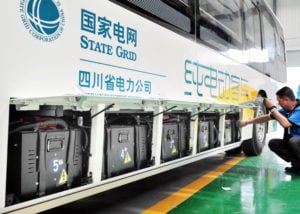For the past decade, Wang Aimin and his team at Hainan University have quietly been growing a coral reef off Wuzhizhou island, an idyllic tropical spot not far from the city of Sanya.
Established with a foundation of giant concrete frames, the coral quickly began to grow… and with the coral came the fish. The project has been so successful it’s now four times its original area of 1,000 mu (67 hectares).
A professor at Hainan University’s College of Ocean Sciences, Wang’s specialism is shellfish farming. But since 2009, he has also led a team in charge of developing “marine ranching” along Hainan’s coast. This is part of a wider national move to explore how artificial reefs might help restore marine environments and promote a sustainable “blue economy”.
What is marine ranching?
Often used to refer to the offshore farming of fish, shellfish and seaweed, the term also describes the rehabilitation of damaged habitats using artificial reefs
The Wuzhizhou marine ranch was China’s first in tropical waters; most of the country’s other experimental ranches are further north, along the coasts of the Bohai and Yellow seas. Since 2019, it’s been listed as a model marine ranch at the national level – an example for others to follow.
One of its key successes has been the collaboration with business. The project is jointly funded by the Wuzhizhou Tourism Company and local government, with the company responsible for day-to-day management and Wang’s team providing technical support. Thanks to the artificial reefs, the island has become something of a destination, with tourists coming to dive and fish. For Wang, the lesson is clear: if a marine ranch is to have lasting ecological benefits, it has to generate economic benefits too.
The first countries to establish marine ranches were Japan, South Korea and the United States. China initially adopted the practice as a way to restore its fishery resources. There’s an element of that on Wuzhizhou too. In addition to building artificial reefs to provide habitat for fish, since 2017 Wang’s team have been experimenting with shellfish seeding, which could help make their ranches more profitable.
Beyond that, Wang hopes Wuzhizhou can become part of China’s efforts to develop “blue carbon sinks”. The coral and algae that grow on the reefs, and the shellfish the team hopes to seed there, are all forms of blue carbon the country is researching.
China is aiming to build a total of 178 marine ranches by 2025. They can be divided into two broad categories: some are like Wuzhizhou, built and run by companies who plan to profit from fishing and tourism. This means there is someone making sure the reefs are kept healthy and safe, preventing destructive practices like fish bombing and bottom trawling. Others are being established by the government for public benefit. Wang says that while these have the best intentions behind them, without long-term funding they often lack ongoing maintenance and evaluations.
To tackle this issue, the Ministry of Agriculture and Rural Affairs is looking at the feasibility of leasing government-run ranches to private firms. For this to happen, deals brokered need to be about more than just profit margins. The ministry is keen to find ways to ensure their marine ranches continue to help protect fish stocks, and also benefit local communities.
Production credits:
Produced by Zhang Chun, Lizi Hesling
Special thanks to the ChinaBlue Sustainability Institute
Music:
“Cicle Gerano” by Blue Dot Sessions, CC BY NC
“So Go We” by Blue Dot Sessions, CC BY NC
“One Little Triumph” by Blue Dot Sessions, CC BY NC
“Sage the Hunter” by Blue Dot Sessions, CC BY NC
Copyright notice:
This video is released under the Creative Commons Attribution Non-Commercial No Derivatives licence. For a copy of the video file, please contact: [email protected].







